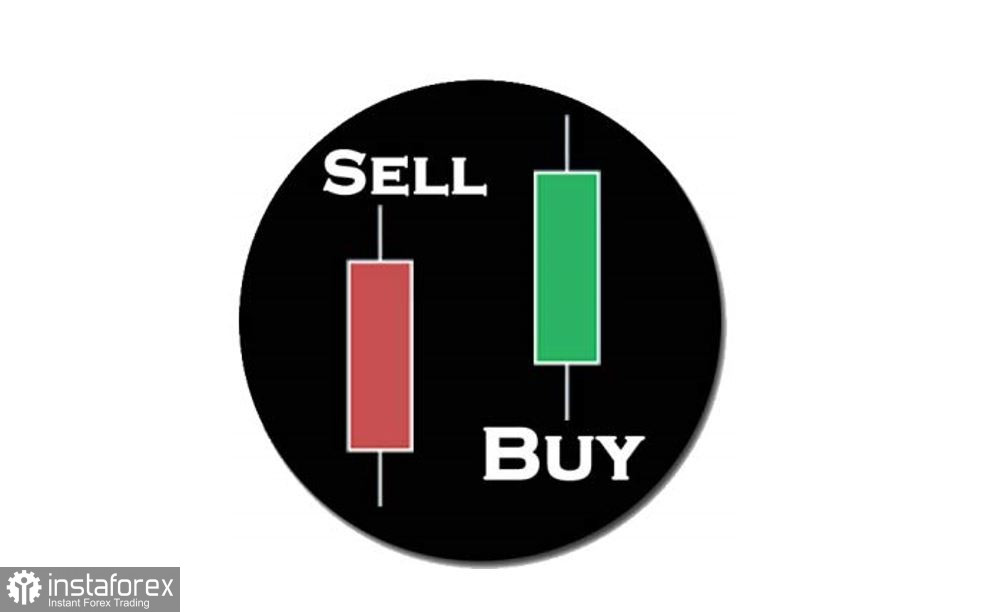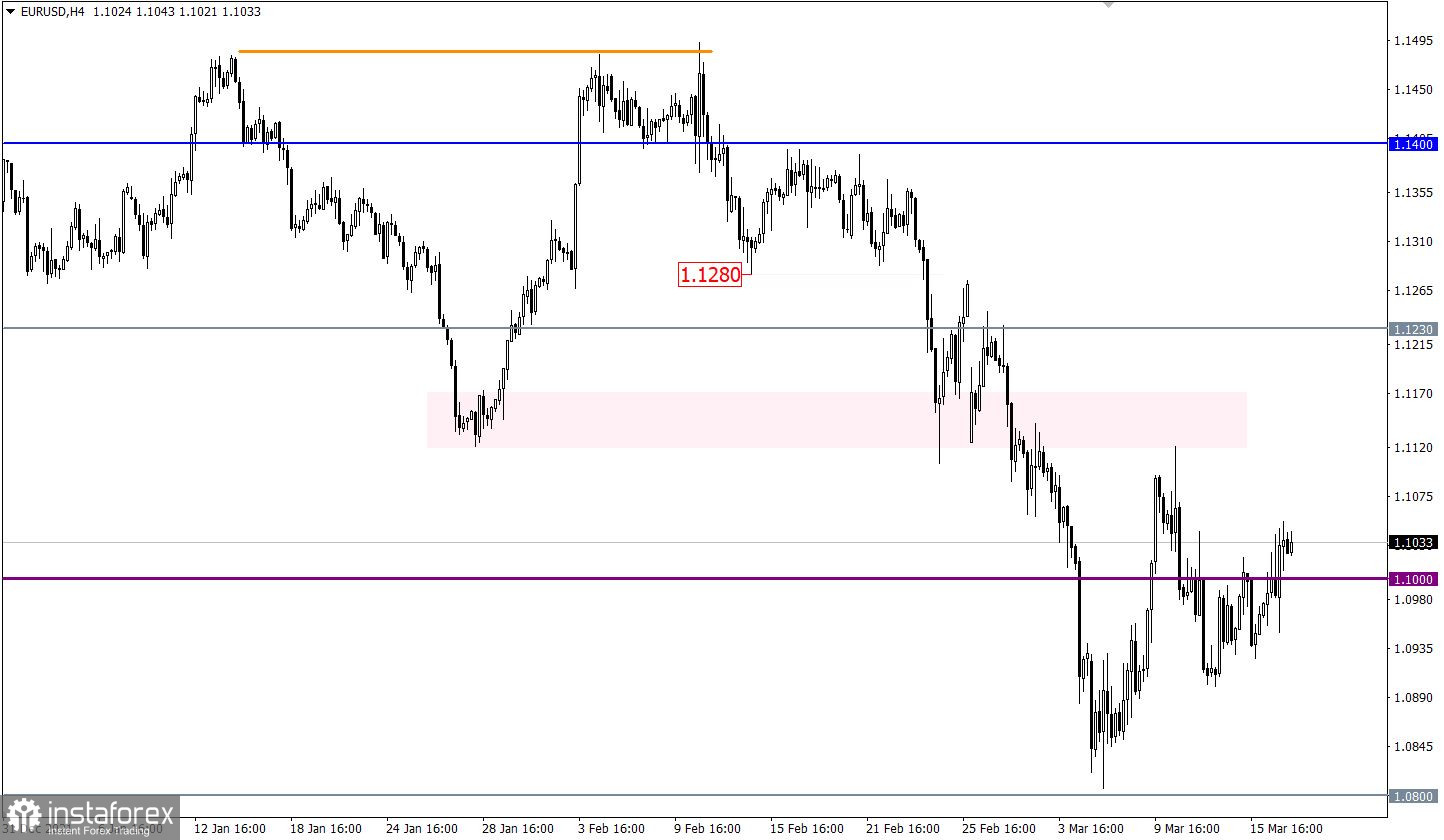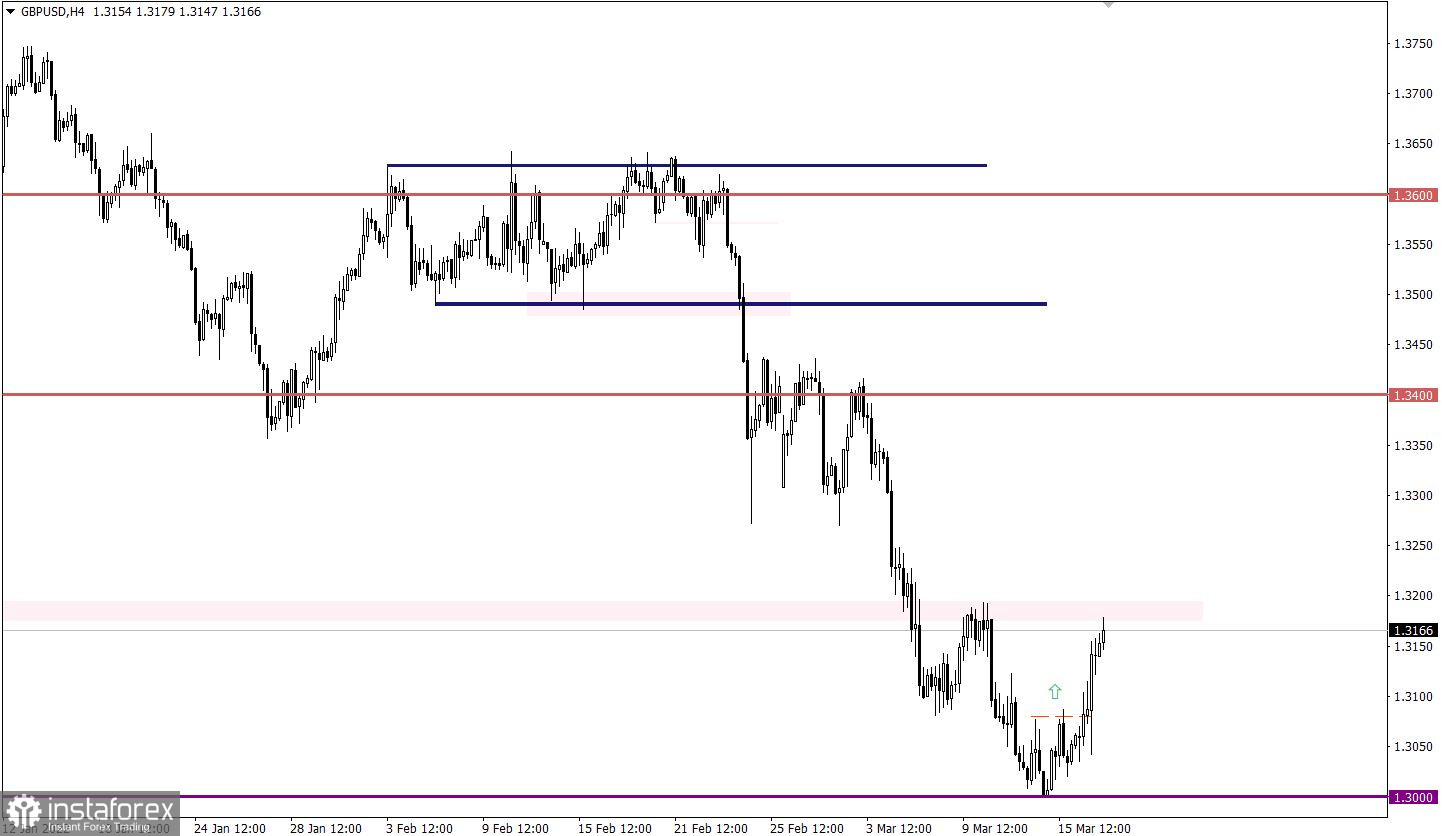Details of the economic calendar of March 16:
The U.S. Federal Reserve raised the interest rate for the first time since 2018. As a result of the March meeting, the regulator decided to raise the rate by 25 basis points - from 0.0-0.25% to 0.25-0.5% per annum. This decision was expected, for this reason, the market reacted very conservatively to it.
The main theses of the Fed:
- The Fed raised the rate by 0.25%
- a further rate increase is appropriate
- the Fed's balance sheet cut is very important
- The Fed lowered its forecast for U.S. GDP growth for 2022 to 2.8% from 4%, expects a rise of 2.2% in 2023
- Fed raises U.S. inflation forecast for 2022 to 4.3% from 2.6%, expects 2.7% inflation in 2023
Powell:
- decided on almost all parameters of reducing the Fed's balance sheet
- The Fed will decide to reduce the balance sheet at the next meetings
- contraction will be faster than in previous cycles
- faster rate increase is possible
Analysis of trading charts from March 16
The EURUSD currency pair, after a short stagnation in the range of 1.0900/1.1000, has overcome its upper limit. This move casts doubt on the recovery of dollar positions relative to the recent correction.
The GBPUSD currency pair is in the process of correction from the psychological level of 1.3000, this movement has led to the strengthening of the pound sterling by more than 150 points. As a result, the quote returned to the area of the local maximum on March 10.

March 17 economic calendar:
Today, the economic calendar is saturated with various macroeconomic indicators. The European Union will publish data on inflation, where it is expected that it will continue to grow from 5.1% to 5.8%. It is worth recalling the EU data for February, and given such a sharp jump in consumer price growth at the current time, the final March inflation data will be prohibitive. Thus, with the current policy of the ECB, where they are in no hurry to raise the interest rate, such high inflation only harms the economy.
The second important event on Thursday is the meeting of the Bank of England, where it is highly likely that a decision will be made to raise the interest rate from 0.50% to 0.75%. This move may stimulate the pound to grow.
During the American trading session, data on jobless claims in the U.S. will be published, where they predict a decrease in the overall figure by 16,000. At the same time, industrial production growth in the United States is expected to accelerate from 4.1% to 4.3%. Against the backdrop of everything that is happening and other macroeconomic data, this is not so important.
Time targeting
Inflation in the EU - 10:00 UTC
Results of the Bank of England meeting - 12:00 UTC
U.S. Jobless Claims - 12:30 UTC
Volume of industrial production in the U.S. - 13:15 UTC
Trading plan for EUR/USD on March 17:
Despite the upward mood of traders, the signal to buy the euro is still unstable. The characteristic uncertainty of the subsequent movement leads to low activity, which indicates pressure on long positions. In this situation, the price may move back to the boundaries of the previously passed range.

Trading plan for GBP/USD on March 17:
In this situation, the signal about the prolongation of the corrective move will be received from the market only after the price holds above the value of 1.3200. Otherwise, we expect a reduction in the volume of long positions and, as a result, price stagnation.

What is reflected in the trading charts?
A candlestick chart view is graphical rectangles of white and black light, with sticks on top and bottom. When analyzing each candle in detail, you will see its characteristics of a relative period: the opening price, closing price, and maximum and minimum prices.
Horizontal levels are price coordinates, relative to which a stop or a price reversal may occur. These levels are called support and resistance in the market.
Circles and rectangles are highlighted examples where the price of the story unfolded. This color selection indicates horizontal lines that may put pressure on the quote in the future.
The up/down arrows are the reference points of the possible price direction in the future.





















